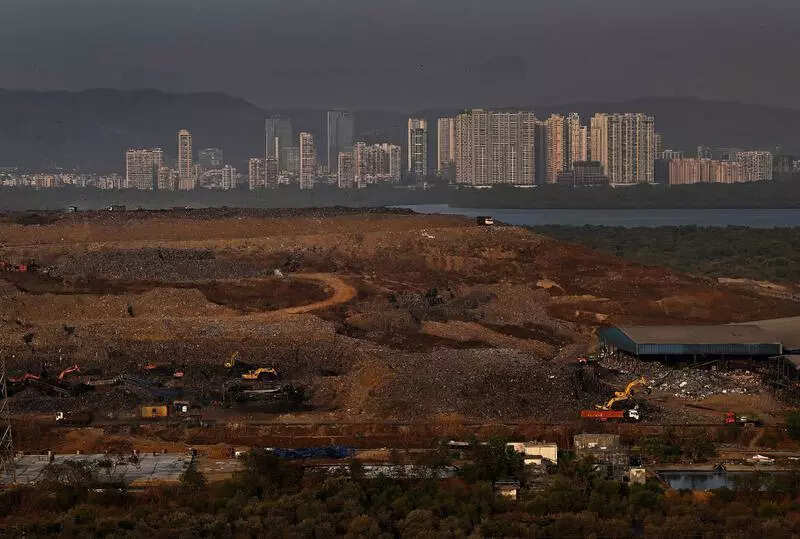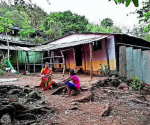HC declares city’s biggest dumping ground a ‘protected forest’ – The Times of India

Mumbai: Fifteen years after BMC began using almost 120 hectares on the eastern coast at Kanjurmarg as a garbage dumping ground, Bombay high court on Friday declared it a protected mangrove forest. The HC gave BMC three months to take necessary measures to comply with its judgment. These include restoring the land, one-third the size of New York’s Central Park, to its ‘private forest’ status, as assigned by the state in 2008.
The two-judge HC bench of Justices Girish Kulkarni and Somasekhar Sundaresan, citing an earlier HC ruling, noted that the Kanjur plot has mangroves and was a ‘protected forest‘. The HC, however, said for the next three months, dumping could continue at what happens to be the city’s biggest landfill for solid waste. The HC declined a stay as sought by the state. The govt will now approach the Supreme Court.
NGO Vanashakti and its member Stalin Dayanand, who moved Bombay High Court to challenge the state’s 2009 decision to de-notify 120 hectares of protected mangrove forest at Kanjurmarg for garbage dumping, said the govt followed no due process of law. The NGO, through senior counsel Gayatri Singh, contended that the state govt lacks absolute power to de-notify or deserve or delete any protected forest without approval from the Centre under the Forest Conservation Act of 1980.
The Supreme Court in 2003 had allowed dumping on 141 hectares at the site on condition that the state would abide by pollution norms. State advocate general Birendra Saraf argued that the land was only marginally covered with mangroves and those patches were excluded from the dumping ground and would be protected. However, the HC bench on Friday ruled that the walls constructed by BMC around the landfill stunted and denuded the mangroves which would normally have grown.
A series of public interest litigations (PILs) have been filed since 2004 for mangrove protection in and around Mumbai. Given the need for a new dumpyard and the fact that other landfill sites in Mumbai were nearing their limit, HC had passed a slew of orders. The disputes travelled to the Supreme Court as well. Acting on a 2005 HC order to protect mangroves, the state notified over 425 hectares of Kanjurmarg land as ‘protected forest’. But it de-notified almost 120 hectares from it in 2009 to create the landfill. It is a challenge to this de-notification that was heard by Justices Kulkarni and Sundaresan at length.
BMC, along with the state, challenged the protected forest status as a ‘mistake’. BMC senior counsel Anil Sakhhare and AG Saraf said the Centre, through the Deputy Salt Commissioner, had petitioned the HC in 2022 to question the ‘protected forest’ status given by the state govt to salt pan lands held by the central govt. The state wanted HC to clarify that since the SC in 2003 directed Kanjurmarg land be used as a dumping ground, its own 2008 decision to call it ‘protected forest’ was a “mistake”.
But the HC held that the ‘private forest notification’ of 2008 was not ‘simply erroneous’ as the state and BMC sought to argue, since it was the product of studies, imaging, and due process of law. The HC, in a detailed analysis of the law, rules, and copious extracts of orders in an 87-page ruling, said, “The state verily found that the land was a mangrove area and it complied with the Forest Act and the HC’s Mangrove Direction. The argument for de-notification was therefore not based on the factual position.”
The HC said the subsequent deletion of 2009 can’t be defended as a ‘rectification’ of error without following mandated process under the Forest Conservation Act. The SC order enabling dumping at Kanjur also directed that pollution laws should be strictly complied with. The SC order can’t be a cover, said the HC. Significantly, HC said, “The issue of mangroves growth on the subject land and the declaration of the law that mangrove land is indeed protected forest (and therefore cannot be used for garbage dumping) was not even brought up before the SC.”
Advocate Zaman Ali, who represented environmental non-profit Vanshakti, in a 2013 PIL, said, “BMC now has three months essentially to find a new location for a dumping ground in place of the Kanjurmarg plot.”
The two-judge HC bench of Justices Girish Kulkarni and Somasekhar Sundaresan, citing an earlier HC ruling, noted that the Kanjur plot has mangroves and was a ‘protected forest‘. The HC, however, said for the next three months, dumping could continue at what happens to be the city’s biggest landfill for solid waste. The HC declined a stay as sought by the state. The govt will now approach the Supreme Court.
NGO Vanashakti and its member Stalin Dayanand, who moved Bombay High Court to challenge the state’s 2009 decision to de-notify 120 hectares of protected mangrove forest at Kanjurmarg for garbage dumping, said the govt followed no due process of law. The NGO, through senior counsel Gayatri Singh, contended that the state govt lacks absolute power to de-notify or deserve or delete any protected forest without approval from the Centre under the Forest Conservation Act of 1980.
The Supreme Court in 2003 had allowed dumping on 141 hectares at the site on condition that the state would abide by pollution norms. State advocate general Birendra Saraf argued that the land was only marginally covered with mangroves and those patches were excluded from the dumping ground and would be protected. However, the HC bench on Friday ruled that the walls constructed by BMC around the landfill stunted and denuded the mangroves which would normally have grown.
A series of public interest litigations (PILs) have been filed since 2004 for mangrove protection in and around Mumbai. Given the need for a new dumpyard and the fact that other landfill sites in Mumbai were nearing their limit, HC had passed a slew of orders. The disputes travelled to the Supreme Court as well. Acting on a 2005 HC order to protect mangroves, the state notified over 425 hectares of Kanjurmarg land as ‘protected forest’. But it de-notified almost 120 hectares from it in 2009 to create the landfill. It is a challenge to this de-notification that was heard by Justices Kulkarni and Sundaresan at length.
BMC, along with the state, challenged the protected forest status as a ‘mistake’. BMC senior counsel Anil Sakhhare and AG Saraf said the Centre, through the Deputy Salt Commissioner, had petitioned the HC in 2022 to question the ‘protected forest’ status given by the state govt to salt pan lands held by the central govt. The state wanted HC to clarify that since the SC in 2003 directed Kanjurmarg land be used as a dumping ground, its own 2008 decision to call it ‘protected forest’ was a “mistake”.
But the HC held that the ‘private forest notification’ of 2008 was not ‘simply erroneous’ as the state and BMC sought to argue, since it was the product of studies, imaging, and due process of law. The HC, in a detailed analysis of the law, rules, and copious extracts of orders in an 87-page ruling, said, “The state verily found that the land was a mangrove area and it complied with the Forest Act and the HC’s Mangrove Direction. The argument for de-notification was therefore not based on the factual position.”
The HC said the subsequent deletion of 2009 can’t be defended as a ‘rectification’ of error without following mandated process under the Forest Conservation Act. The SC order enabling dumping at Kanjur also directed that pollution laws should be strictly complied with. The SC order can’t be a cover, said the HC. Significantly, HC said, “The issue of mangroves growth on the subject land and the declaration of the law that mangrove land is indeed protected forest (and therefore cannot be used for garbage dumping) was not even brought up before the SC.”
Advocate Zaman Ali, who represented environmental non-profit Vanshakti, in a 2013 PIL, said, “BMC now has three months essentially to find a new location for a dumping ground in place of the Kanjurmarg plot.”
















